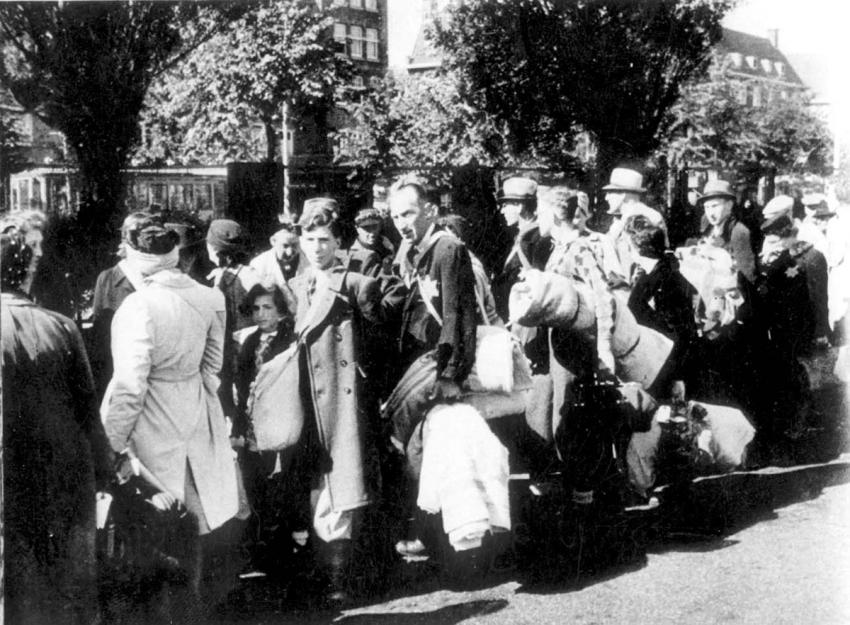Westerbork was located in northeastern Netherlands and nearly 100,000 Jews passed through there. Almost all of them were deported to Auschwitz and Sobibor, where they were murdered. This was possible largely due to the cooperation of personnel at the municipalities, councils, railways and the police in Holland.
On the eve of the Nazi occupation, approximately 140,000 Jews lived in the Netherlands, less than two percent of the total population. Some 34,000 were refugees from Nazi Germany. In 1939, the Dutch established a camp in the village of Westerbork to imprison these Jews and another 7,000 who were descendants of Jews who had fled Portugal in the late 15th century after the expulsion from Spain. Westerbork was surrounded by barbed wire and 24 large wooden huts were built there. The authorities ordered the Jews to finance the prisoners' requirements.
The Netherlands was occupied by the Nazis in May 1940, and in January 1942, the relocating of Jews to Amsterdam and Westerbork began. Jews with Dutch citizenship were forced to move to Amsterdam, and some were imprisoned in the Vught concentration camp. Jewish refugees were sent to Westerbork.
The first deportation of Jews to Auschwitz left Westerbork on 15 July 1942. In September 1942, SS officer Dischner was appointed commander of the camp. In October, all the Jewish men in labor camps in the Netherlands were transferred to Westerbork, and their families in Amsterdam were sent there too, a total of over 12,000 people. Westerbork was not ready to absorb such large numbers, and the living conditions there deteriorated. That same month, Albert Gemmeker was appointed camp commander, and over 7,000 Jews were deported. From February 1943, deportation trains left Westerbork every Tuesday, and the night before became a night of terror in the camp, as recalled by survivor Joseph Melkman:
"On the night between Monday and Tuesday, at 3 AM, they closed the block we were living in, sealed it hermetically, no one was allowed to leave or enter. And then the block leader read out the names of the people designated for deportation – an alphabetical list… From all the terrible things I saw, later too in the camps, murderous beatings etc, my strongest recollection, and that of others, is from that night, 3 AM Tuesday morning, in the total silence and darkness, when they read, as though they were meting out the death penalty to those who were being deported. Sometimes you yourself could be one of them, and if not you, then relatives, friends, acquaintances. Each and every week, a certain number of death sentences at the same hour. And that made such a terrible and indelible impression on us, on all of us, on all those who also wrote about it, that we still have a sensitivity to Tuesdays, the day that the death penalty was meted out to Dutch Jewry."
(Excerpt from Dr. Joseph Melkman's testimony at the Eichmann Trial)
There was a dual reality in Westerbork. One section of the camp's population could live their day-to-day lives for months without being deported, while alongside them were the masses of Jews brought to Westerbork and then deported to the East one or two weeks later.
From March 1944, the number of deportees from Westerbork decreased to hundreds per month. On 3 September 1944, as the Allied Armies approached, a train holding almost 2,000 Jews was sent to Auschwitz. Few of the deportees survived. On 12 April 1945, Westerbork was liberated, by which time less than 1,000 Jews remained in the camp.
Yad Vashem Photo Archives 108CO4







